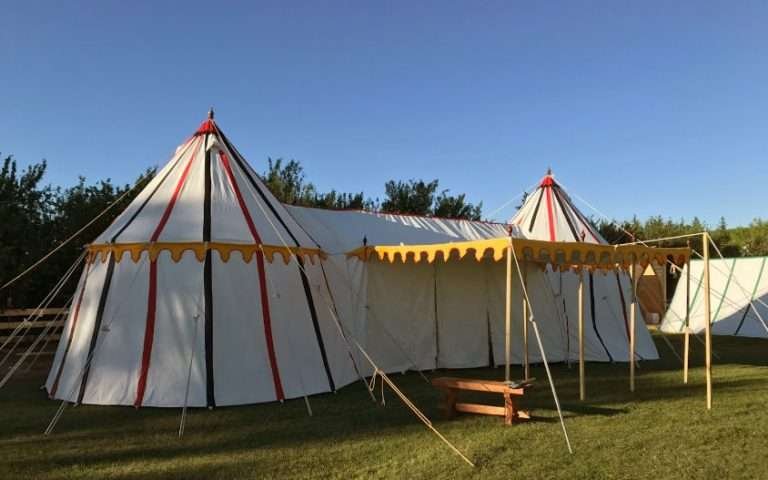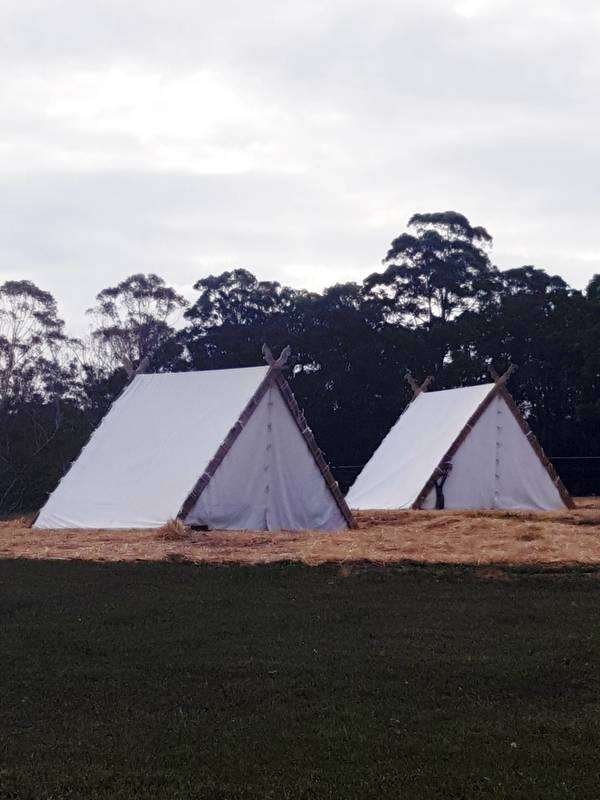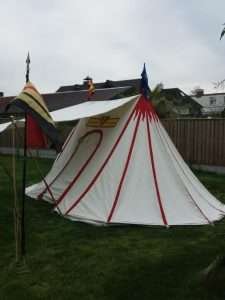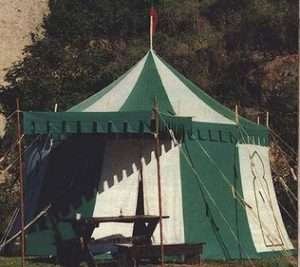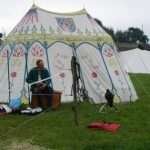Exploring the World of Medieval Tents: A Look into Historic and Period Structures
The Evolution of Medieval Tents
The history of medieval tents traces back to early nomadic societies, where portable shelters played a crucial role in daily life and warfare. Over the centuries, the design and use of these structures evolved significantly, reflecting changes in materials, techniques, and cultural practices. Initially, early medieval tents were simple constructs made from animal hides or plant materials, which were readily available to nomadic tribes. As urbanization began and trade routes flourished, the complexity of these tents increased.
In regions such as England and France, advancements in weaving and textiles led to the creation of more durable and weather-resistant options. The introduction of wool and canvas transformed tents, making them lighter yet more robust, which was essential in varied climates. Various styles emerged, including the iconic double bell wedge tents for sale, which became popular due to their innovative design and stability. Other tent styles, such as square high peak tents for sale, provided a more grandiose appearance and were often deployed during royal events or tournaments.
Tents were not only functional but also served as symbols of status. The use of elaborate decorations, such as heraldry and intricate embroidery, emphasized the rank of their occupants. Henry VIII tents for sale, for example, showcased the grandeur of the English monarchy during the Tudor period, demonstrating how these structures became essential in both military and ceremonial contexts. Moreover, the role of medieval tents extended beyond warfare; they were essential for festivals, trade fairs, and even domestic settings. Anglo Saxon tents for sale illustrate how specific designs catered to various social activities in medieval life, encapsulating the significance of these structures.
Overall, the evolution of medieval tents encapsulates the historical transitions within society, showcasing how these versatile shelters adapted to meet the needs and aesthetics of their time.
Types of Period Tents and Their Features
Throughout history, medieval tents have served distinct purposes, each characterized by unique designs and functionalities. Among the various types of tents, the pavilion tent stands out as a popular choice for both military and ceremonial use. Its distinctive peaked roof design, often embellished with colorful fabrics, makes it ideal for important gatherings and events. These structures provided ample space for noble families and were typically supported by a central pole, creating an inviting and grand atmosphere.
Another notable design is the yar or tabernacle tent, which was frequently employed for domestic living and smaller encampments. This type of tent is recognized for its simplicity and functionality, often constructed with a rectangular shape and a straightforward pole system. The yar offered adequate shelter for families during travels or trades, reflecting an essential aspect of daily life in the medieval era.
The ger, or yurt, represents a significant cultural tent often associated with nomadic tribes across Central Asia, though adaptations of this structure appeared in various medieval contexts. Featuring a circular design and a felt covering, it was valued for its insulation properties and mobility. Ger tents were easily assembled and dismantled, making them suitable for groups on the move, blending practicality with traditional craftsmanship.
In military contexts, tents such as the double bell wedge and square high peak tents for sale were instrumental. The double bell wedge tent, known for its aerodynamic design, allowed for quick assembly and effectiveness in harsh weather conditions, while square high peak tents provided more vertical space and ease of movement within them, catering to the needs of soldiers.
Moreover, the historical significance of Henry VIII tents for sale and Anglo Saxon tents for sale illustrates the evolution of tent designs through royal and cultural influences. Each type of period tent carries not only functional relevance but also reflects the societal norms and artistic expressions of its time. With such variety, individuals interested in acquiring authentic historical tents for sale will find plenty of options that cater to diverse needs, whether for reenactments or personal collections.
Tent Crafting: Materials and Techniques
The crafting of medieval tents is a fascinating field that reflects the ingenuity and artistry of artisans from historical periods. Central to the construction of these authentic historical tents for sale were materials such as canvas, wool, and animal hides. These natural materials offered durability, water resistance, and insulation, which were essential for creating functional living spaces during various outdoor activities, including military campaigns, festivals, and fairs.
Artisans in the medieval era employed various techniques to ensure that their period tents for sale were both practical and resistant to environmental elements. A notable method involved using heavy-duty linen or canvas that was tightly woven and often treated with oils or wax to enhance its waterproof properties. Similarly, wool was used for its natural resistance to moisture and provided warmth, making it an ideal choice for colder climates. The preparation of animal hides included the tanning process, which transformed raw skins into sturdy materials suitable for tent construction.
The structural integrity of medieval tents relied heavily on their framework. Support beams made of timber or sturdy poles were commonly used, often intricately carved to add an artistic flair. Depending on regional practices, the designs varied; for instance, Anglo Saxon tents utilized simpler constructions, whereas Viking tents often included additional rigging and supports to withstand the harsher climates of northern regions. Moreover, innovations such as double bell wedge tents for sale showcased versatility and adaptable designs that catered to different needs.
Through meticulous craftsmanship, tent makers were able to create stunning examples of medieval architecture. This level of detail not only served a practical use but also spoke volumes about the cultural significance of tents in that era. From round pavilion tents for sale to square high peak tents for sale, each construction offers insight into the lifestyle and customs of the people who dwelled within.
Cultural Significance and Legacy of Medieval Tents
Medieval tents held considerable cultural significance during the medieval era, serving not merely as temporary shelters but as reflections of social status, identity, and cultural practices. The materials, designs, and sizes of tents frequently varied based on the rank of their occupants, making them a symbol of power and prestige. Nobles and royals often resided in lavishly adorned period tents for sale, which provided a space for grand gatherings, feasts, and courts. Such structures often featured intricate designs and luxurious materials, distinguishing them from simpler tents used by the lower classes, including anglo saxon tents and basic shelters for the common folk.
Tents also played a pivotal role in various community activities and significant events. They served as gathering points for feasts where the community could celebrate victories or important ceremonies. In military contexts, tents were crucial during campaigns, providing a base for commanders. Viking tents, for instance, were specifically designed for such purposes, supporting mobility while retaining the necessary functions of a base of operations. The presence of tents during battles often influenced the tactical decisions made by leaders, and their designs were tailored to facilitate rapid assembly and dismantling.
